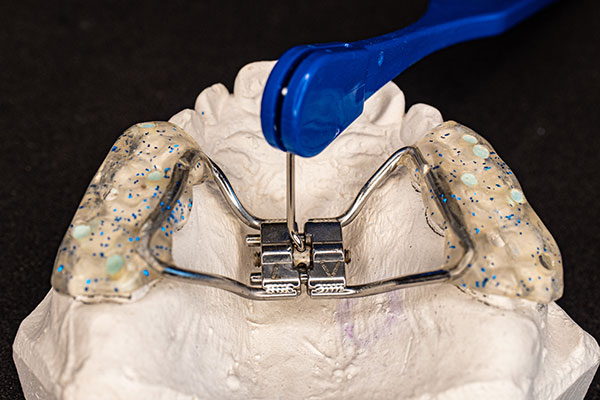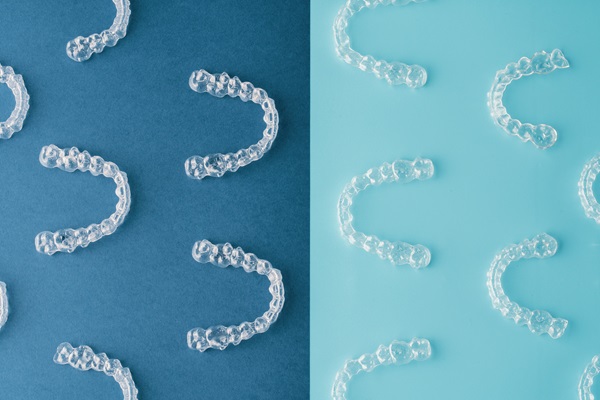What Are Palatal Expanders in Orthodontics?

Palatal expanders are used to widen a patient’s palate (the roof of the mouth), creating more space for their top set of teeth. The American Association of Orthodontists recommends bringing your child in for their first bite assessment by the time they reach seven.
At this stage in their development, their bite should be established enough to spot orthodontic issues. Early detection is crucial since the developing jaw and craniofacial structures of children are considerably easier to mold than the structures of adults. This can shorten the length of treatment by more than half.
Some of the issues that indicate a patient’s palate might not have enough space include:
- Impacted teeth
- Crossbites
- Crowded teeth
Improving bites with palatal expanders
Some people are born with smaller palates due to genetic and other factors. Not having enough space in the roof of the mouth leads to orthodontic issues as the child’s permanent teeth start to erupt. Expanders work by gently applying force on the wearer’s palate, encouraging it to grow. This creates more space on the jaw, reducing the risk of orthodontic issues in the future. Expanders also make correcting any existing orthodontic issues easier once space has been created on the patient’s jaw.
Treatments times with palatal expanders are typically somewhere between three to twelve months. Pediatric orthodontists often keep the appliance in place even after the desired growth has been achieved so the palate can solidify in its new shape.
Expanders can be removable or fixed. They are customized for each child, so they fit correctly along the roof of their mouth. The most recommended types of palatal expanders include:
- Rapid palatal expanders: These are the most commonly used type of expanders. They fit parallel to the molars in the upper dental arch. RPEs with a central screw that is used to activate the device. The orthodontist provides the patient with a key that is used to manipulate the screw and gently push the palatal bones. Treatments with RPE are often completed within six months
- Removable palatal expander: These are recommended when a child’s palate only needs to be slightly expanded. The appliance looks like a retainer, but it comes with a center screw that works similarly to the ones that come with RPEs
- Mini-Implant Assisted RPE: These devices are typically recommended for older patients who did not get orthodontic treatments they needed when they were younger. Such patients require a more powerful appliance to expand their palate since their craniofacial structures have hardened at that point. Mini-Implant Assisted RPEs involve placing two to four mini-implants on parallel points on the patient’s palatal bones. These implants are linked with a center screw. As is the case with the other types of expanders, the screw is used to activate the device
Get your child off to a good start
Issues like a child’s palate not having enough room for their teeth are best addressed early while their bones are still developing. Give us a call or visit our Laguna Hills clinic to set up an appointment with our pediatric orthodontist.
Request an appointment here: https://www.orangecoastortho.com or call Orange Coast Orthodontics at (949) 860-1231 for an appointment in our Laguna Hills office.
Check out what others are saying about our dental services on Yelp: Orthodontist in Laguna Hills, CA.
Recent Posts
Thinking of going for orthodontic treatment but worried about unsightly metal braces? Read on to learn about the advantages of aesthetic braces. For decades, patients had no choice but to straighten their teeth with unsightly braces with metal brackets and wires. This had a tremendous impact on their self-esteem, and many decided to forego braces…
Clear braces for teens and traditional braces are two popular options for teenagers who need teeth straightening treatments. Braces are the first effective procedure for straightening teeth and have been used since the 1800s.Virtually everyone on the planet grew up with someone who wore braces, and that is a testament to how effective these devices…
Dental professionals generally recommend a child should see an orthodontist at or around age 7. However, in the presence of a confirmed or suspected orthodontic issue, it is appropriate for a younger child to make a visit. The importance of preserving and maintaining a child's oral health cannot be overstated. Therefore, the task of choosing…
Lingual braces are a far less common method that is used in orthodontics to straighten teeth that need attention. Orthodontists do not recommend lingual braces nearly as often for various reasons; nonetheless, they are a promising treatment method that can correct imperfections. Additionally, they offer some benefits that other teeth straightening methods do not. Continue…


